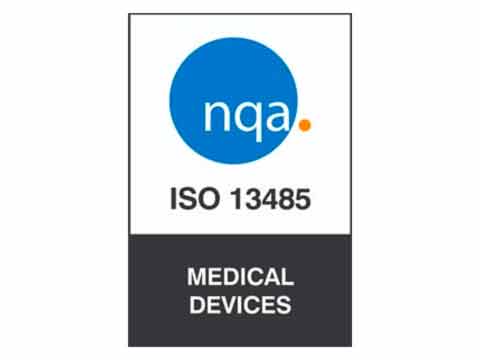As we approach 2024, it promises continuing healthcare change marked by technology breakthroughs that will redefine medical practices and enhance the quality and accessibility of healthcare services. The anticipation for these advancements underscores the pivotal role technology plays in shaping the future of the healthcare and medical fields.
AI will have a noticeable impact in 2024, so this article discusses where we are today and where healthcare and medical care technology is going in 2024 in other areas. The future is bright.
Healthcare Technology in 2024
The healthcare industry has been moving from the sick care model to value-based care for a while. It’s a slow journey. Technological improvements and the power of data promise to continue and accelerate this progression. The future trends in healthcare technology converge on a common goal: improving the quality and affordability of healthcare services while shifting the paradigm towards proactive disease prediction and prevention.
The U.S. healthcare market is hurtling towards unprecedented growth, with the national healthcare product’s value projected to soar to a staggering 6 trillion USD by 2026. In 2021, healthcare spending was 18.3% of GDP. It’s a slight dip from 2020 and the full impact of COVID, but represents an unrelenting upward trend. To make an impact, healthcare organizations must leverage data and digital technology. This is not merely a recommendation; it’s a prescription for future-proofing businesses, ensuring higher staff efficiency, reducing burnout, achieving better financial results, and, most importantly, enhancing the patient care experience.
What are the trends in 2024 that will shape the future?
- Information Sharing
The adoption of electronic health records (EHR) stands out as one of the most widespread uses of technology in healthcare. EHRs revolutionize the accessibility of patient health information, providing instantaneous access to both providers and patients through automated workflows. Patients no longer need to engage in the arduous task of calling the doctor’s office for test results; instead, they can seamlessly review their EHR on the patient portal.
Care teams, armed with the same up-to-date information, can coordinate decision-making efficiently. Administrative staff, in turn, spend less time grappling with paperwork and making phone calls to exchange information. While EHRs have undeniably streamlined healthcare processes, challenges persist, with portability emerging as a notable concern. Technology providers are, however, acknowledging this issue and developing EHR integrations to facilitate the seamless adoption of new technologies.
The new final rule published by ONC enhances key provisions in preventing information blocking and builds on guidelines to promote information sharing. It updated certification criteria by moving the the USCDI standard to Version 3, which expands the required datasets that must be shared. And also promotes transparency in algorithms. TEFCA is also expected to launch in 2024 and make a significant impact on data-sharing capabilities.
- Improved Access and Equity in Care
Healthcare access and equity remains a critical barrier to quality care, with cost, distance, and physical limitations impeding patients from receiving timely treatment. Technology emerges as a game-changer in addressing this challenge. Telehealth, for instance, has proven instrumental in reducing emergency room visits and lowering costs for both patients and providers. It enables remote and home-bound people in need of care to get the help they need. While not everyone has high-speed internet at home or a smartphone, the gap is closing.
Portable diagnostic tools, such as handheld fundus cameras, empower providers to deliver care within communities, eliminating the need for patients to travel to a physical office. The transformative potential of technology in improving healthcare access is particularly impactful for disadvantaged populations, offering solutions that bridge gaps and ensure equitable healthcare delivery.
There aren’t enough healthcare professionals to help the population in need. The US is in an obesity and mental health crisis. Incorporating digital therapeutic and digital health solutions into the standard of care helps the healthcare system scale better. The tech industry must continue to educate the healthcare professionals to the options and the healthcare professionals need to improve their digital education.
- Improved Remote Monitoring
Technology enables remote monitoring and continually enhances accuracy, speed, and accessibility to care. Remote monitoring is pivotal in tackling one of the healthcare sector’s significant challenges: chronic illnesses. Diseases like heart disease and diabetes, prevalent in the U.S., can be reduced in severity through technological interventions.
Numerous studies have demonstrated that the simple act of monitoring one’s personal health improves the health and well-being of people with chronic conditions. Sharing that data with your healthcare professionals allows them to further improve patient outcomes through a better understanding of the patient’s condition, intervene at critical times, and provide education.
In 2024, we expect to see the existing device monitoring companies improve their capabilities in measuring new metrics (blood pressure, lactic acid for athletes), reducing the monitoring cost, and improving algorithms to make sense of all this new data.
- Greater Availability of Resources and Information
The internet has ushered in unparalleled access to medical journal articles, treatment guidelines, and research data. This democratization of information benefits both individuals and medical professionals globally. Patients and healthcare professionals from any corner of the world can now communicate seamlessly, thanks to advanced technology in the medical field. While we said we weren’t going to talk about AI, the use of generative AI will make this information more accessible to patients in the coming year. Medical journals are not easy to read and understand for the average person, but it’s easy to query the AI and get a summary of the pertinent facts. Yes, we need to be aware of hallucinations, but the future is bright.
- Increased Communication Skills with Patients and Other Medical Personnel
Advancements in technology have facilitated direct communication between doctors and patients through channels like email and teleconferencing. Collaboration with professionals from diverse fields is now more accessible, enabling physicians to tap into a broader spectrum of expertise. Furthermore, sharing patient records within the healthcare team has become significantly more straightforward, enhancing patient care coordination.
Explore Custom Software Solutions with Estenda Solutions
In the landscape of digital health future 2024, the need for custom software solutions becomes increasingly evident as data volumes and types increase, and information sharing becomes the norm. Whether you have an idea waiting to materialize or need assistance implementing data into a specific project, Estenda Solutions is your ally. We invite you to explore how our expertise can help transform your concepts into reality. Contact us today at (484) 362-1200 — we serve Wayne and beyond, ready to start on a journey of innovation and excellence. No obligations, just possibilities.










